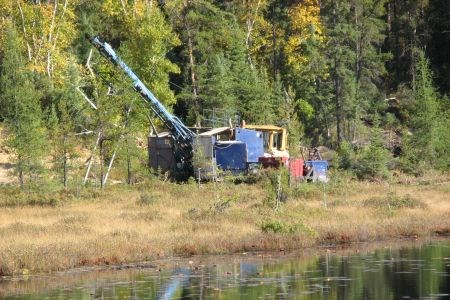It is expected the flow-through funding program will be extended once more when the federal government introduces its budget.
Dean Rogers, president of the Porcupine Prospectors and Developers Association in Timmins, said the program is usually in effect for a two-year period but “it has been down to the wire for extensions in the past. Even this year, the extension was left on the order papers at the dissolution of Parliament.
“This creates uncertainty in the marketplace and efforts are being taken by organizations like the PDAC (Prospectors and Developers Association of Canada) to ensure the continuity of the program based on its success.”
Rogers said in the past 25 years, flow-through shares raised $10 billion for mineral exploration in the country. They allow those in higher tax brackets to claim the entire amount on their tax returns.
Super flow-through shares were introduced, Rogers said, to give an additional 15 per cent tax credit to investors who contribute to qualifying “grass roots” exploration projects. Ontario, along with some other provinces, also offer additional tax credits.
“The concept was introduced as a consequence of the high cost of mineral exploration and the even higher risks of investment money actually resulting in an economic mineral deposit,” Rogers said.
The ratio of claims staked, he said, to actual successful mine-producing claims, is about 10,000 to one.
“In an effort to stimulate the vast potential which the mineral industry holds for the Canadian economy, the government introduced legislation in the 1980s which mitigated investment risk by allowing exploration companies to pass on the tax benefits related to exploration costs,” Rogers said.
According to Garry Clark, executive director of the Ontario Prospectors and Developers, “most of the money is raised in southern Ontario, but spent in Northern Ontario.”
However, there are some downsides, he said. The exploration money has to be spent in a fixed amount of time, and investors, for the most part, “are not really following your story.”
Flow-through funding can only be used on the ground for exploration and not for operational expenses.
“A junior costs about $200,000 to $300,000 a year to operate and there are expenses like audits, filing fees, insurance and lawyers,” Clark said. “When you see financing, you might see 80 per cent of it as flow through and 20 per cent not as flow through since that is used for general funds.”
A good time to raise flow-through funds is in the fall when investors have a good idea of where they stand tax-wise and in the spring, when taxes are paid.
“At one time, there was a competition between flow through and the film industry tax breaks,” Clark said. “People who invest are attempting to defer taxes, and they still pay when they sell their shares. But it's a great system and it's for the exploration industry.”
Rogers said there are efforts underway to extend flow-through funds to include expenditures around and above previous mine workings that have not been active for the past five years.
“Currently, no expenditures are allowed for the mining of either horizontal or vertical extensions of previously mined ore deposits,” he said.
There are also concerns that with the seasonal limitations of some exploration projects, particularly in the Far North, and recent legislated requirements for consultations, time limitations may be jeopardized.




